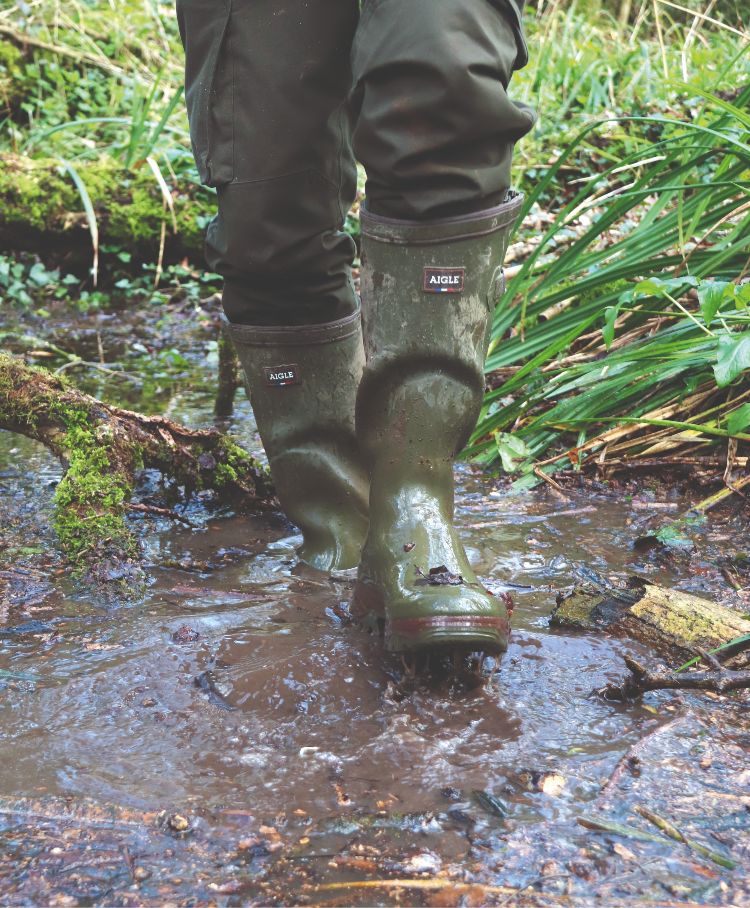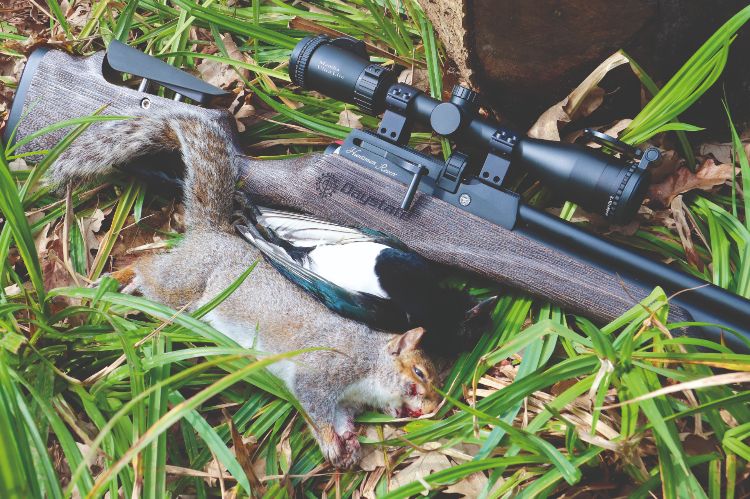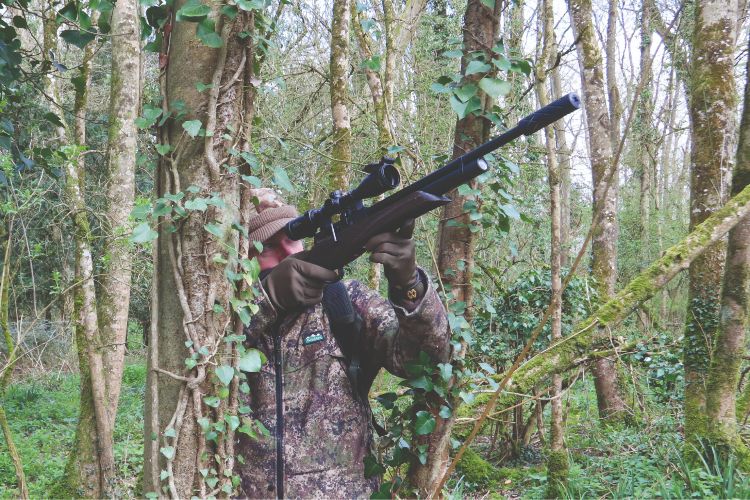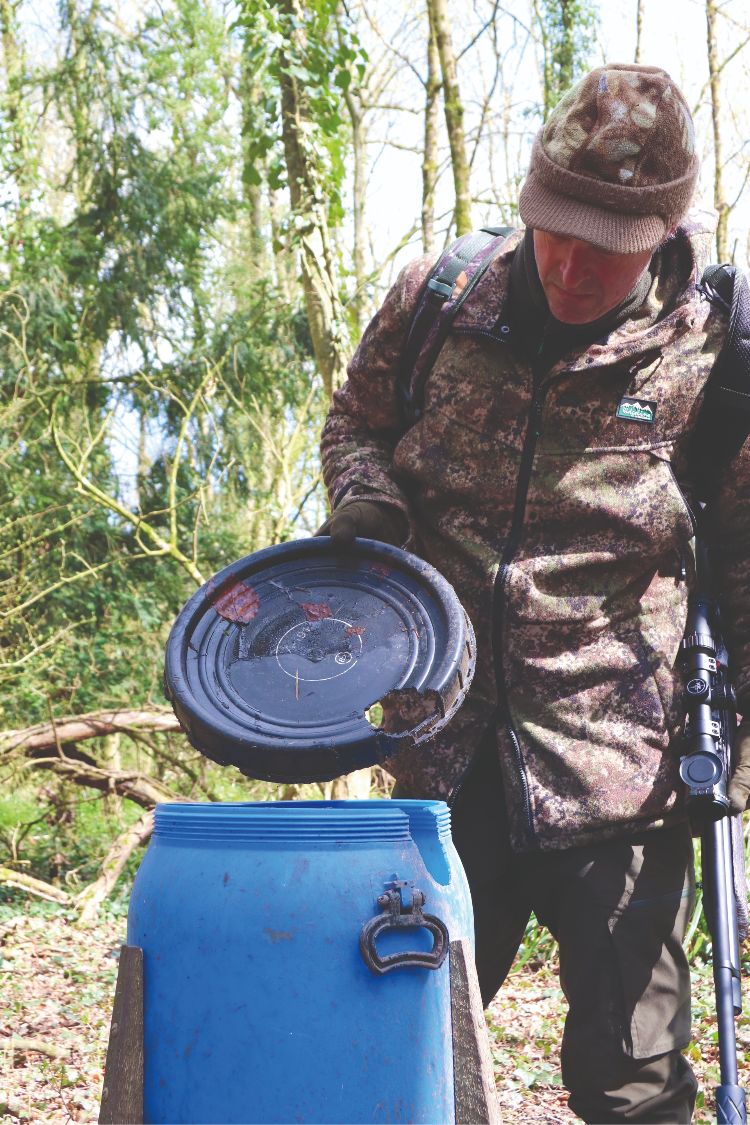Springtime is an exciting season to be out with an air rifle. There’s a real buzz in the air right now, and you can literally feel the countryside coming to life as the weather warms up and the days grow longer.
Although my best results usually come to ambush tactics, picking off pests from the cover of a hide, I do like to adopt a mobile approach when shooting in woodland at this time of year. Roving sessions may not yield the biggest bags, but they’re a great way to enjoy sunny spring mornings, and also provide a very useful opportunity to explore your shoot. On the latter point, it’s usually a lot easier to spot clues that reveal the whereabout of quarry before the trees are in full leaf – they’re already starting to green-up, so time is of the essence.
My latest roving session was a brief morning outing shortly after daybreak, and the air was thick with birdsong as feathered woodland residents celebrated the start of another spring day. As ever, the chiffchaffs and blackbirds were in good voice. I pride myself on being able to identify a wide variety of woodland birds by their calls, but I must confess that there were a couple that I couldn’t put a name to as I stood loading the magazine of my Daystate Huntsman Safari.
 SUITABLY BOOTED
SUITABLY BOOTED
Before closing the boot of my car, I was faced with the quandary of footwear selection. With the weather gradually improving, I was tempted to go for the comfort and stealth of lace-up boots. However, the ground still appeared to be pretty wet from recent downpours, and as I was planning to cover an area that can remain boggy for most of the year, I eventually decided that wellies would be a more practical choice.
Suitably booted, I headed off into the woods. Travelling light is the order of the day for this kind of shooting, and other than my gun, all I was carrying was a small backpack loaded with items, including a water bottle and a hide net. I also had my shooting cushion clipped to my bag because I like to have a dry, comfortable seat at the ready, just in case I find a promising spot and decide to settle down for an impromptu ambush.
 STARTLED SQUIRREL
STARTLED SQUIRREL
Although my roving sessions are usually more about reconnaissance than filling the game bag, I will still take advantage of any opportunity to pick off pests, and my first chance came rather sooner than expected. I was only about 200 yards from the car when a flash of silvery grey caught my eye. A squirrel had been foraging on the ground, but it had clocked the sound of my approach – probably because it was still on high alert after hearing my car rumbling along the track – and was bolting towards a large oak. It leapt up onto the tree’s trunk and began to scrabble up towards the boughs, before pausing to look back.
The startled squirrel froze dead still, about ten feet off the ground, and was clearly looking at me as I tried to make myself inconspicuous behind the rotting stump of a fallen tree. It held its position as I shouldered the Huntsman, and I was soon looking at it through the lens of my MTC Mamba scope. The squirrel was only about 25 yards from me, and its hesitance proved to be a costly mistake. I brought the crosshair to bear on the destructive rodent’s skull and dropped it cleanly from the tree with a solid smack to the head.
 SLOWLY DOES IT
SLOWLY DOES IT
After picking the squirrel, I made my way on through the woods. I’m never in a hurry on these sessions, and rather than simply stomping on from one woodland block to the next, I meander slowly, occasionally breaking away from the main tracks and frequently pausing to look all around me.
Of course, one of the primary reasons for halting for a thorough scan is to check for squirrels. These crafty rodents have a habit of freezing at the sound of an approaching hunter, and it’s surprising how often you can spot them huddled in the fork of a branch of clinging to the bark of a tree trunk during a stop-off.
I failed to glimpse any more squirrels, but I did see plenty of their calling cards – mostly in the form of their dreys. Large dreys are obvious and I used to overlook smaller bundles of dried leaves, often writing them off as tangles of windblown foliage. However, I was surprised by how many of these seemingly innocent bundles of leaves yielded squirrels when we knocked them out during a drey-poking session back in February. I certainly won’t neglect them again!
Moving on, I sloshed my way through a particularly marshy patch of woodland. With mud and water halfway up my boots at times, I was pleased with my decision to opt for welly boots. They may be less stealthy than lace-ups, but my feet would have been drenched without them.
 BLACK AND WHITE BANDIT
BLACK AND WHITE BANDIT
Carefully, I approached one of the last remaining active pheasant feeders on the estate, in the hope of spotting a feasting grey squirrel, and heard the chatter of a magpie. I couldn’t see the mischievous bird, but it sounded close. Tucking myself between a couple of ivy-clad ash trees for cover, I scanned the treetops for signs of the black and white bandit. I soon clocked the cocky corvid perched near the top of a silver birch, about 30 yards from me, and very close to the feed hopper. Using the trees for added support, I took aim at the little corvid, taking care to steer my pellet clear of a haze of fine twigs, and dropped the magpie from its perch with a chest shot.
Magpies are relatively small birds, and the shock to its heart and lung area was sufficient to result in a clean kill. These compact corvids are also relentless nest thieves, and with songbirds nurturing their clutches in the woods, it was a welcome addition to the morning’s tally.
 CLUES EVERYWHERE
CLUES EVERYWHERE
I stowed the shot bird in my backpack and made my way over to the feeder, only to discover that it had suffered some serious squirrel damage. The greedy rodents have gnawed a lot of feeders this year, presumably because they know they can scoff grain more quickly from inside the drums than by releasing it from the coil at their base. With large holes in the lid and drum, this feeder looked like being a write-off. The gamekeeper can do without additional expense like that, and the damage that grey squirrels cause to trees coupled with their negative impact on native wildlife, it’s easy to see why they are such unwelcome guests.
There was still plenty of feed in the drum and I suspected that the squirrels would soon be back. I also reckon the easy access to the grain was what had drawn in the unfortunate magpie. Sadly, I didn’t have time to wait for the bushy-tailed diners to return for another munch because time was ticking by and I needed to get home for a day’s work at my desk.
The return journey to the car failed to produce any more shots, but I was glad that I’d made the effort to get out for a couple of hours before breakfast. My outing resulted in two fewer pests in the woods, and more importantly, gave me a lot of clues to where I should set up hides and feeding stations over the coming weeks.
The gamekeeper was not at all happy when I told him that he’d lost yet another feed drum to the squirrels. Although he wasn’t planning to refill it this year, it will have to be replaced for the new season. He cheered up a bit when I told him I was planning to set up a feeder of my own in the same spot, along with a hide from which I plan to ambush the destructive grey squirrels when they turn up in search of another free meal.